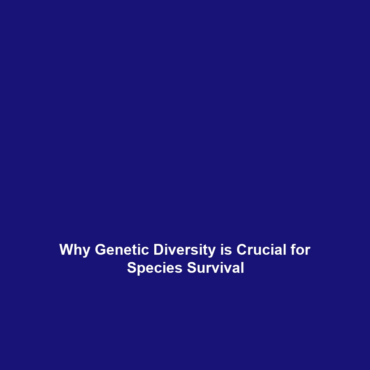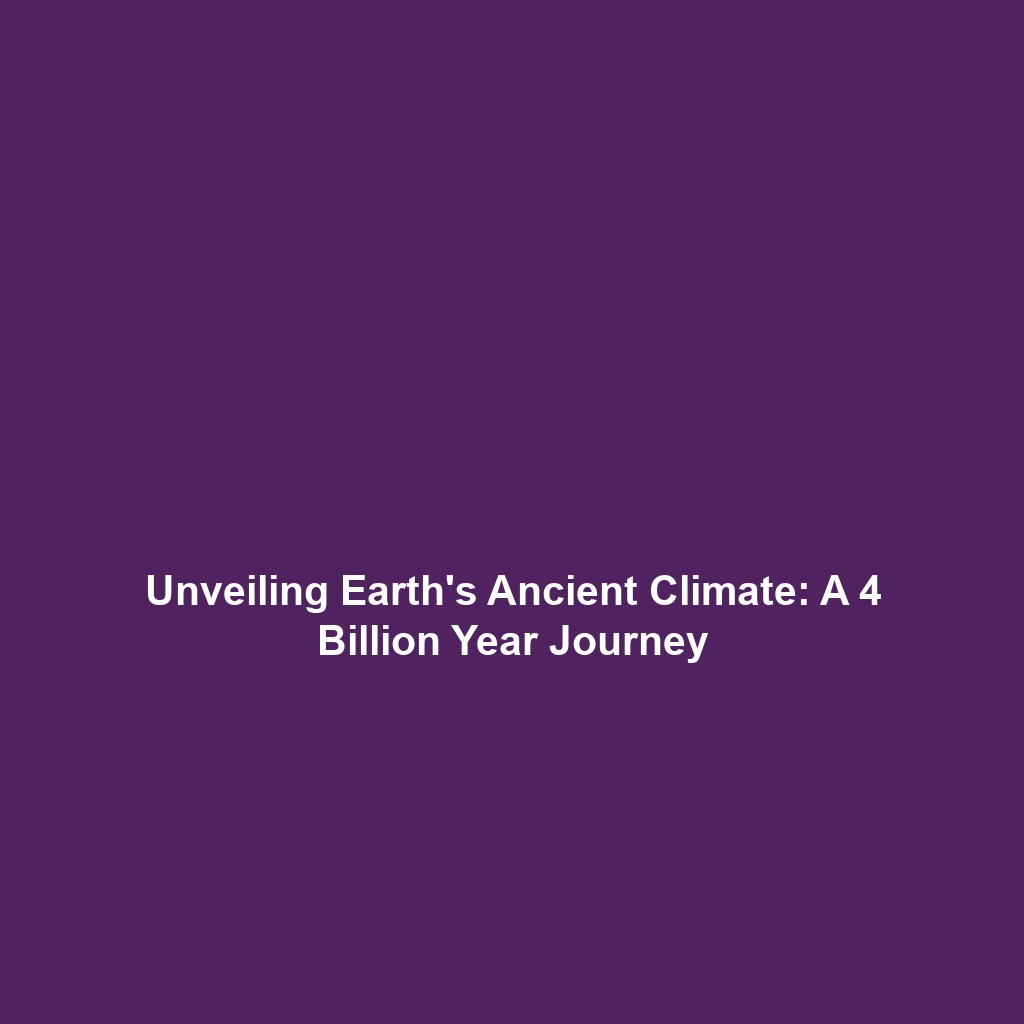The Importance of Maintaining Genetic Diversity for Species’ Long-Term Survival and Adaptability
The critical role of genetic diversity is increasingly recognized as a major factor influencing the long-term survival and adaptability of species, especially in the face of deforestation and biodiversity loss. As habitats diminish due to human activity, the genetic variation among species becomes vital for resilience. This article delves into why maintaining genetic diversity is essential for the sustainability of ecosystems, highlighting its significance within the wider context of biodiversity preservation.
Key Concepts of Genetic Diversity
Genetic diversity refers to the total number of genetic characteristics in the genetic makeup of a species. It plays a crucial role in providing species with the ability to adapt to changing environments, resist diseases, and survive in the face of climate change. These concepts are particularly important when examining the effects of deforestation and biodiversity loss. Key principles include:
- Adaptability: Greater genetic variation enhances a species’ ability to adapt to environmental stressors, which is vital as ecosystems change due to human interference.
- Resilience: Species with high genetic diversity are generally more resilient to diseases and pests, making them better equipped to thrive in altered habitats.
- Evolutionary Potential: Genetic diversity is the foundation for evolution; it enables species to evolve and fit into new ecological niches.
Applications and Real-World Uses
Understanding and maintaining genetic diversity has practical applications, particularly in conservation efforts aimed at mitigating the impacts of deforestation and biodiversity loss. Significant uses include:
- Restoration Projects: Genetic diversity is essential in selecting native species for restoration projects, helping ecosystems recover more effectively.
- Agricultural Biodiversity: Protecting genetic diversity in crops can lead to more resilient food systems capable of withstanding adversities such as climate change.
- Conservation Genetics: This field focuses on preserving genetic diversity in endangered species, vital for maintaining healthy populations.
Current Challenges
Despite the importance of maintaining genetic diversity, several challenges hinder its study and application within the context of deforestation and biodiversity loss:
- Limited Funding: Research on genetic diversity often suffers from a lack of financial resources.
- Data Gaps: Insufficient genetic data on many species complicates conservation strategies.
- Fragmented Habitats: Deforestation results in isolated populations that can lead to inbreeding, reducing genetic diversity further.
Future Research and Innovations
Upcoming innovations and research are critical for understanding genetic diversity’s role in conservation. Future-focused areas include:
- Genomic Technologies: Advances in genetic sequencing technologies allow for more thorough assessments of genetic diversity.
- Biotechnology: Innovations such as gene banking and cloning are being explored to maintain genetic diversity in endangered species.
- Climate Adaptation Strategies: Research is underway to identify traits that promote resilience in changing climates, which depends on genetic variation.
Conclusion
Maintaining genetic diversity is not just a key factor for the long-term survival and adaptability of species; it is an essential strategy in combating the challenges posed by deforestation and biodiversity loss. As we move forward, it is imperative to prioritize efforts in conservation genetics, habitat restoration, and education on the importance of biodiversity. To learn more about biodiversity preservation and conservation strategies, visit our Conservation Tactics page.

